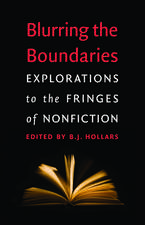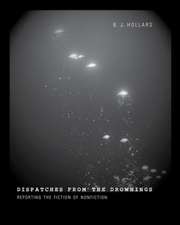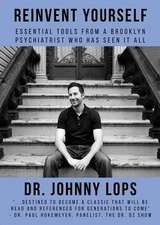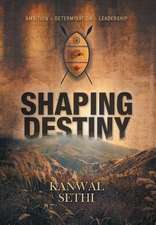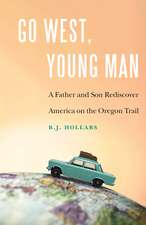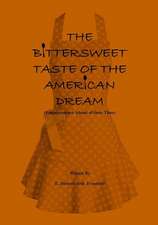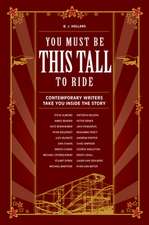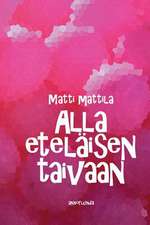Flock Together: A Love Affair with Extinct Birds
Autor B. J. Hollarsen Limba Engleză Hardback – feb 2017
After stumbling upon a book of photographs depicting extinct animals, B.J. Hollars became fascinated by the creatures that are no longer with us; specifically, extinct North American birds.
How, he wondered, could we preserve so beautifully on film what we’ve failed to preserve in life?
And so begins his yearlong journey to find out, one that leads him from bogs to art museums, from archives to Christmas Counts, until he at last comes as close to extinct birds as he ever will during a behind-the-scenes visit at the Chicago Field Museum.
Heartbroken by the birds we’ve lost, Hollars takes refuge in those that remain. Armed with binoculars, a field guide, and knowledgeable friends, he begins his transition from budding birder to environmentally conscious citizen, a first step on a longer journey toward understanding the true tragedy of a bird’s song silenced forever.
Told with charm and wit, Flock Together is a remarkable memoir that shows how “knowing” the natural world—even just a small part—illuminates what it means to be a global citizen and how only by embracing our ecological responsibilities do we ever become fully human. A moving elegy to birds we’ve lost, Hollars’s exploration of what we can learn from extinct species will resonate in the minds of readers long beyond the final page.
Watch a book trailer for Hollars’s book, Midwestern Strange.
| Toate formatele și edițiile | Preț | Express |
|---|---|---|
| Paperback (1) | 117.12 lei 3-5 săpt. | +32.07 lei 6-12 zile |
| Nebraska – mar 2022 | 117.12 lei 3-5 săpt. | +32.07 lei 6-12 zile |
| Hardback (1) | 147.22 lei 3-5 săpt. | |
| Nebraska – feb 2017 | 147.22 lei 3-5 săpt. |
Preț: 147.22 lei
Nou
Puncte Express: 221
Preț estimativ în valută:
28.17€ • 29.41$ • 23.31£
28.17€ • 29.41$ • 23.31£
Carte disponibilă
Livrare economică 14-28 martie
Preluare comenzi: 021 569.72.76
Specificații
ISBN-13: 9780803296428
ISBN-10: 0803296428
Pagini: 224
Ilustrații: 9 photographs, 4 illustrations
Dimensiuni: 140 x 216 x 27 mm
Greutate: 0.64 kg
Editura: Nebraska
Colecția University of Nebraska Press
Locul publicării:United States
ISBN-10: 0803296428
Pagini: 224
Ilustrații: 9 photographs, 4 illustrations
Dimensiuni: 140 x 216 x 27 mm
Greutate: 0.64 kg
Editura: Nebraska
Colecția University of Nebraska Press
Locul publicării:United States
Notă biografică
B.J. Hollars is an associate professor of English at the University of Wisconsin–Eau Claire. He is the author of numerous books, including From the Mouths of Dogs: What Our Pets Teach Us about Life, Death, and Being Human (Nebraska, 2022) and Go West, Young Man: A Father and Son Rediscover America on the Oregon Trail (Bison Books, 2021).
Extras
Flock Together: A Love Affair with Extinct Birds
by B.J. Hollars
© 2017 by the Board of Regents of the University of Nebraska. All rights reserved.
And take the sun and air.
The sun yet warms his native ground—
The Dodo is not there!
The voice which used to squawk and squeak
Is now for ever dumb—
Yet may you see his bones and beak
All in the Mu-se-um.
—Hilaire Belloc, “The Dodo,” 1896 Had the birds not come searching for me, I might not have gone searching for them. But they did, one warm September afternoon, just as I sat down for lunch.
At first I mistook their tapping for a knock on the front door, but as I moved toward it, it was evident that the sound was coming from elsewhere.
I returned to the table, reached for my soup, when suddenly the knocking repeated:
Tap-tap-tap-tap-tap . . .
I stood at attention, peeked out the back door, and saw nothing.
Tap-tap-tap-tap-tap . . .
Turning at whiplash speed, I caught a glimpse of a small, speckled frame gripping the screen door with his claws. His tapping repeated (Tap-tap-tap-tap-tap / Tap-tap-tap-tap-tap), prompting me to crane my neck to get a better view.
“Woodpecker,” I cried to my wife and young children, bounding over baby carriers and bouncers until reaching my phone. “We got a live one here!”
Twenty-first-century birder that I am (or had become in the days preceding my first conscious sighting), I clicked on my Audubon Birds Pro app, scrolling past everything between albatross and Wood Warbler before reaching the digital family of woodpeckers aglow on my screen. Fifth on the list were the Downies, complete with a near-identical photo of the bird I’d just encountered. There he was, white bellied and red patched and just an inch or two longer than my fist.
It’s you, I thought. You’re my guy.
Upon peering back out the window, I learned that “my guy” was only one half of a pair. A moment later his counterpart greeted me, a female Downy who blurred past my feeder, taking refuge in the backyard birch.
I didn’t quite know the protocol for what to do next. The answer, I now know, is to keep quiet and enjoy the show. Bumbling birder that I was, I did the opposite.
I clicked on the app’s audio feature, blasted “Whinny call #2” from my phone’s speaker.
The recorded call bleated through the screen door and infiltrated my yard.
It was enough to frighten the female back into flight, though the male—more curious than scared—momentarily observed me from his nearby roost.
Our eyes locked, and then, just as quickly as he’d come, he disappeared into the trees.
That was it. That was everything.
The birds had called, and I’d answered.
When I first learned of extinction, I hardly learned of extinction at all. Instead, I learned of the phenomenon’s poster child, the Dodo—a flightless, feathered, football-shaped bird that by the late 1600s had marched his pigeon-like legs into oblivion. Of course, we humans paved that trail—hunting them until their numbers dwindled, then allowing an invasive species of wild pig to finish the job.
In third-grade science class, we never quite got around to the finger pointing. Certainly there was no discussion of the relentless assaults by sailors and swine on the remote Mauritius Island. Instead, we at our desks were mostly content just staring at paintings of that silly-looking bird, a creature we never knew existed beyond the confines of Disney’s Alice in Wonderland.
When our teacher explained to us that the Dodo was more than a movie star—that, in fact, it had once existed—her explanation managed only to spur further questions.
What did she mean by “once”? I wondered. How could something that once existed no longer exist anywhere in the world?
I took my teacher’s claim as a challenge and, that very afternoon, wandered the woods behind my Indiana home in search of what hadn’t been seen in well over three hundred years. While I spotted the usual array of midwestern avian inhabitants—a preponderance of robins and finches and crows—I was surprised to find not a single Dodo among them.
After an exhaustive fifteen-minute investigation, I faced facts: the Dodo, it seemed, did not live anywhere in my backyard.
Which proves nothing, I decided as I tromped home for dinner that night.
After all, every house on our block had a backyard—plenty of places for some silly-looking bird to hide.
To say that I was in Dodo denial would be an understatement. Frankly, I was a hell-bent nine-year-old cut from the same cloth as Ahab, motivated (at least I thought) not by some deep inner turmoil but by an innate desire to prove my teacher wrong. In retrospect, I can now admit that perhaps my struggle to grasp the Dodo’s extinction was, in fact, related to my own inner turmoil; namely, my inability to come to grips with what seemed impossible, that entire species could vanish on a large scale.
If the rumors were true and the Dodo was extinct, then what prevented other species from joining them?
Of course, plenty of species have—five mass extinctions’ worth—though it wasn’t until nine-year-old me began pouring over my local library’s collection of illustrated dinosaur books that I began to rethink my own Dodo-related doubt. It was one thing for some football-shaped bird to hide, but where the hell were all the dinosaurs?
There was no denying it; the facts were now clear.
Probably, they were hiding together.
After two decades with no signs of a Dodo, I shift my search to a slightly more accessible species: the oft thought to be extinct Ivory-billed Woodpecker. I’m well aware of my needle-in-a-haystack odds of spotting a live one, which is why I begin my search for a dead one, instead.
I first meet Dr. Dana Ehret, curator of paleontology for the Alabama Museum of Natural History, at 8:00 a.m. on a Thursday morning near the bike racks outside his office. I’d returned to my graduate school alma mater—the University of Alabama—to give a few readings, and I’d enlisted Dana’s help in tracking down an Ivory-billed Woodpecker skin.
An Internet search had revealed that one might reside in the museum’s collection, though in email exchanges with Dana, he explained that the specimen’s lack of catalog number made it doubtful that our bird in question ever completed her trip to Tuscaloosa. And even if she had, given that she was collected in 1866—just a year removed from the university’s burning at the hands of the Union army—it was unlikely her carefully preserved skin had remained so on into the present day.
“Still,” he wrote in reply, “we can have a look.”
Shortly after our introduction, I follow the thirty-five-year-old bespectacled curator to the third floor of Mary Harmon Bryant Hall, at which point he leads me toward a double-wide wooden doorway.
A beep and a key-turn later the doors are flung wide, revealing a concrete, temperature-controlled room, which, to my eyes, resembles the world’s most extravagant bomb shelter.
“This is the collections storage area,” Dana says, refuting my bomb shelter theory. “We’ve got everything from taxidermied bears and lions to shoes and dolls. Even a shrunken head.”
He leads me through the compact storage shelves, opening and closing each row to reveal the array of oddities and treasures within. There’s the taxidermy row (complete with everything from black bears to barracudas), followed by the art row (portraits of naturalists and librarians, just to name a few). A bit farther down we reach the storage drawers, each of them filled with a spectrum of specimens.
Dana climbs a ladder, then removes the sliding drawer featuring the woodpeckers.
“So here we have our five Pileated Woodpeckers,” he says, holding the drawer before me.
I stare at the flock of faded specimens, each aligned neatly alongside the next. They appear perfectly preserved, their wings folded tight to the shells of their bodies, a conga line of creatures facing beak to back.
“No Ivory-bill, though,” Dana admits, reaching for the nearest Pileated to search its secondary feathers for the requisite white markings and coming up short.
Each bird is carefully tagged with a species type, a collection location, a date, and a catalog number.
But of all the specimens we’ll see that day, we’ll find no Ivory-billed Woodpecker.
Even dead, she’s managed to elude me.
As consolation, Dana directs me to the mammoth tooth from Siberia (“Go ahead, you can touch it”), the fossil fractures (“Pretty cool, right?”), and finally, the collection’s rare mosasaur bones.
“So what were these guys?” I ask, staring at what resembles a larger version of a crocodile skull.
“Mosasaurs were marine animals that lived about seventy-five to eighty million years ago,” Dana explains. “They went extinct around the age of the dinosaurs.”
“What happened?”
“Well, that’s a debate,” he says. “Did they go out with the asteroid impact along with the other dinosaurs, or right before? We aren’t certain, but there are plenty of clues left behind.”
He reaches forward to touch the skull, the snout, a bit of the jaw, and then begins reading the bones like a book. He takes me back seventy-five million years, to a time when this very mosasaur darted across the ancient Alabama oceans, snagging fish between its razor-sharp teeth.
“Oh, and see this?” he asks, pointing to a slight protrusion on the skull. “This looks like a healed wound. Maybe there was a fight, maybe two mosasaurs were biting each other.”
I lift an eyebrow.
“You got all that from a couple of bones?”
“Sure,” he smiles. “There’s always something to learn from the clues.”
And it’s Dana’s job to preserve the clues, no matter how large, small, or seemingly abundant.
“This is the part that I think is really important,” he tells me. “When kids come in and see trays of dead opossums, they think, ‘Why do we need trays of dead opossums?’ Well, the truth is, maybe we don’t need trays of dead opossums. But when we talk about things like Ivory-billed Woodpeckers, and extinction more generally, it’s important to look at the historical range of these animals and how they lived. And how can we do that without collections like this? These collections,” he says, “help us make projections for the future.”
And as Dana makes clear, the collection’s crystal-ball effect extends well beyond opossums and woodpeckers.
“Ultimately, it’s about us, too. And all of this,” he says, waving his arm toward the rows of specimens. “This might be more important than ever given humans’ impact on the planet over the past fifty years.”
“It’s bad?” I ask, anticipating his answer.
“Unprecedented. And it’s important that we know how mammals responded to an almost instantaneous jump in temperature because . . . well, we’re going to see that again.”
I don’t have to ask which mammals he’s most concerned about. I can see the fear in his eyes.
Since ancient times, we’ve begged the birds for clues. We have a name for it, augury—the practice in which augurs scanned the skies to seek answers from the flight patterns of birds. If there was a question of whether or not to go to war or pass a law, augurs were sought for their guidance. The ancients didn’t believe the birds themselves had the answers, but that they served as intermediaries for the gods.
These days, select species of birds offer us insight in a different manner, mainly by not being seen at all.
Such as the aforementioned Ivory-billed Woodpecker, whose last universally confirmed U.S. sighting occurred in a Louisiana swamp in the spring of 1944. Though the species’ alleged reemergence caused quite a stir in 2005, many experts have since resigned themselves to the likelihood of the bird’s extinction. Yet since we can’t say for certain it’s gone for good, for conservation-status purposes it’s listed as “critically endangered.”
Other modern era birds have earned the more irreversible status, among them—in reverse chronological order of their extinction—the Carolina Parakeet (officially declared extinct in 1939), the Heath Hen (1932), the Passenger Pigeon (1914), the Labrador Duck (1878), and the Great Auk (1844 or 1852, depending on whom you ask). It’s only natural to feel funereal over such a litany, though our feelings won’t bring these birds back. However, it’s my hope that by being made aware of the birds we’ve lost, we might also become aware of humanity’s role in losing them.
Let the record show that I am no augur, no conservation activist, not even much of a student of science. Ask me about the periodic table and I’ll ask you where you’d like me to sit. Additionally, when it comes to environmental consciousness, I’m as guilty as any other faucet-dripping, electricity-burning, gas-guzzling citizen of the industrialized world. I’ve likely chugged more than my fair share of soda out of Styrofoam cups, as well as tossed more than a few plastic forks into campfires. I admit also—rather embarrassingly—that I’m a halfhearted recycler at best, and though I participate in the weekly ritual of sorting trash from what only appears to be trash, I’ve often wondered if the process was concocted simply to distract me from creating more trash.
The point being: we needn’t be as green as a forest glade to understand what we’ve lost and keep losing. Likewise, we needn’t be card-carrying members of Greenpeace or the Sierra Club to understand the world in which we live. I’m proof that anyone with a willingness to learn can, and arguably should, participate in the critical environmental debates of our time. After all, we are all stakeholders in protecting our planet—a line so painfully obvious that it hardly seems worth writing. Yet I do because for many of us, guardianship of our world remains unconscionably low on our daily priority list.
Why worry about tomorrow, we think, when we’re busy living today?
Indeed, we humans are busy living today, though this luxury doesn’t extend to all species.
I refer you to the Heath Hen, the Passenger Pigeon, the Ivory-bill itself.
In Hope Is the Thing with Feathers, author Christopher Cokinos describes the “causation” leading to extinction as a “complex unwinding rope that we have to weave back together, even if many strands are missing.” Throughout the writing of this book, I’ve learned that people like Dana Ehret do a lot of that weaving. But so do men like James Tanner, A. W. “Bill” Schorger, Francis Zirrer, Aldo Leopold, Don Eckelberry, Frank Chapman, and so many others from the recent past, all of whom fought fiercely to save or preserve bird species as they continued to drift away. In many instances, knowledge of these men’s contributions has drifted away as well, an error I hope to correct throughout this book.
More-contemporary people deserve praise, too, such as Steve Betchkal, Joel Greenberg, Dr. Curt Meine, Dr. David Blockstein, Dr. Stanley Temple, Josh Engel, and the phalanx of ornithologists, conservationists, and scientists from the Cornell Lab of Ornithology, the Nature Conservancy, the Audubon Society, the Department of Natural Resources, the U.S. Fish and Wildlife Service, and the Environmental Protection Agency, among many other organizations that strive to educate the public on environmental issues pertinent to our daily lives. These people and organizations have taken their conservation message from schoolyards to backyards and everywhere in between, dutifully raising awareness of the environmental challenges of our time, while reminding us, too, that our time to overcome these challenges is limited.
While men primarily populate this book, women, too, have played vital roles in furthering the environmental message. From Silent Spring author Rachel Carson to bird advocate Rosalie Edge, women’s contributions are undoubtedly noteworthy, and their stories deserve their own book. However, throughout the writing of this work, I found myself gravitating more toward the stories of men; men who—try as they might—watched as one species after another slipped between their fingers.
Allow me to close with a reality that is often overlooked: though the story of extinction is often tragic, it is also a natural, biological occurrence.
What’s less natural, however, is the rate at which we are dispensing of species.
Citing Eric Chivian and Aaron Bernstein’s Sustaining Life, the Center for Biological Diversity notes that the normal extinction rate is approximately “one to five species per year.” Today, however, some scientists believe we’re “losing species at 1,000 to 10,000 times” the normal rate, describing the crisis as “the worst spate of species die-offs since the loss of the dinosaurs 65 million years ago.”
I hope these numbers give you pause. They should.
And they raise a question: how do we humans avoid a similar fate?
We can begin by acknowledging that we are often the cause of the trouble, the pestilence and the scourge. Or at least we might concede our complicity as a result of our growing inattention. Given the glut of newspaper articles on the subject, I’d assumed Americans were more concerned about environmental threats than ever before. Not so, according to a 2015 Gallup poll. In fact, we Americans are less concerned about environmental issues than we were in 2014. Speaking specifically to the subject of extinction of plant and animal species, those surveyed confirmed a 5 percent drop in interest, from 41 percent to 36 percent.
Which leads us to another question: how can we be stewards for species in decline, when our interest is in decline as well?
It’s easy to grow frustrated by these facts; far harder, however, is finding real-world solutions for the troubles we now face. As noted previously (see my admission of halfhearted recycling and usage of Styrofoam cups), I write this not from any ivory-towered pedestal but from my cheap seats here on the ground—the place where we all live and learn.
Though I don’t have the answers, I do have the questions. And I have the stories, too: stories of people who’ve dedicated their lives to birds, as well as stories of birds that, even in death, offered us a message for our future.
The question now is whether we’ll unplug our ears long enough to hear their message.
And if so, what might we learn from the absence of their song?
by B.J. Hollars
© 2017 by the Board of Regents of the University of Nebraska. All rights reserved.
Prologue: Dodo Lost
The Dodo used to walk around,And take the sun and air.
The sun yet warms his native ground—
The Dodo is not there!
The voice which used to squawk and squeak
Is now for ever dumb—
Yet may you see his bones and beak
All in the Mu-se-um.
—Hilaire Belloc, “The Dodo,” 1896 Had the birds not come searching for me, I might not have gone searching for them. But they did, one warm September afternoon, just as I sat down for lunch.
At first I mistook their tapping for a knock on the front door, but as I moved toward it, it was evident that the sound was coming from elsewhere.
I returned to the table, reached for my soup, when suddenly the knocking repeated:
Tap-tap-tap-tap-tap . . .
I stood at attention, peeked out the back door, and saw nothing.
Tap-tap-tap-tap-tap . . .
Turning at whiplash speed, I caught a glimpse of a small, speckled frame gripping the screen door with his claws. His tapping repeated (Tap-tap-tap-tap-tap / Tap-tap-tap-tap-tap), prompting me to crane my neck to get a better view.
“Woodpecker,” I cried to my wife and young children, bounding over baby carriers and bouncers until reaching my phone. “We got a live one here!”
Twenty-first-century birder that I am (or had become in the days preceding my first conscious sighting), I clicked on my Audubon Birds Pro app, scrolling past everything between albatross and Wood Warbler before reaching the digital family of woodpeckers aglow on my screen. Fifth on the list were the Downies, complete with a near-identical photo of the bird I’d just encountered. There he was, white bellied and red patched and just an inch or two longer than my fist.
It’s you, I thought. You’re my guy.
Upon peering back out the window, I learned that “my guy” was only one half of a pair. A moment later his counterpart greeted me, a female Downy who blurred past my feeder, taking refuge in the backyard birch.
I didn’t quite know the protocol for what to do next. The answer, I now know, is to keep quiet and enjoy the show. Bumbling birder that I was, I did the opposite.
I clicked on the app’s audio feature, blasted “Whinny call #2” from my phone’s speaker.
The recorded call bleated through the screen door and infiltrated my yard.
It was enough to frighten the female back into flight, though the male—more curious than scared—momentarily observed me from his nearby roost.
Our eyes locked, and then, just as quickly as he’d come, he disappeared into the trees.
That was it. That was everything.
The birds had called, and I’d answered.
When I first learned of extinction, I hardly learned of extinction at all. Instead, I learned of the phenomenon’s poster child, the Dodo—a flightless, feathered, football-shaped bird that by the late 1600s had marched his pigeon-like legs into oblivion. Of course, we humans paved that trail—hunting them until their numbers dwindled, then allowing an invasive species of wild pig to finish the job.
In third-grade science class, we never quite got around to the finger pointing. Certainly there was no discussion of the relentless assaults by sailors and swine on the remote Mauritius Island. Instead, we at our desks were mostly content just staring at paintings of that silly-looking bird, a creature we never knew existed beyond the confines of Disney’s Alice in Wonderland.
When our teacher explained to us that the Dodo was more than a movie star—that, in fact, it had once existed—her explanation managed only to spur further questions.
What did she mean by “once”? I wondered. How could something that once existed no longer exist anywhere in the world?
I took my teacher’s claim as a challenge and, that very afternoon, wandered the woods behind my Indiana home in search of what hadn’t been seen in well over three hundred years. While I spotted the usual array of midwestern avian inhabitants—a preponderance of robins and finches and crows—I was surprised to find not a single Dodo among them.
After an exhaustive fifteen-minute investigation, I faced facts: the Dodo, it seemed, did not live anywhere in my backyard.
Which proves nothing, I decided as I tromped home for dinner that night.
After all, every house on our block had a backyard—plenty of places for some silly-looking bird to hide.
To say that I was in Dodo denial would be an understatement. Frankly, I was a hell-bent nine-year-old cut from the same cloth as Ahab, motivated (at least I thought) not by some deep inner turmoil but by an innate desire to prove my teacher wrong. In retrospect, I can now admit that perhaps my struggle to grasp the Dodo’s extinction was, in fact, related to my own inner turmoil; namely, my inability to come to grips with what seemed impossible, that entire species could vanish on a large scale.
If the rumors were true and the Dodo was extinct, then what prevented other species from joining them?
Of course, plenty of species have—five mass extinctions’ worth—though it wasn’t until nine-year-old me began pouring over my local library’s collection of illustrated dinosaur books that I began to rethink my own Dodo-related doubt. It was one thing for some football-shaped bird to hide, but where the hell were all the dinosaurs?
There was no denying it; the facts were now clear.
Probably, they were hiding together.
After two decades with no signs of a Dodo, I shift my search to a slightly more accessible species: the oft thought to be extinct Ivory-billed Woodpecker. I’m well aware of my needle-in-a-haystack odds of spotting a live one, which is why I begin my search for a dead one, instead.
I first meet Dr. Dana Ehret, curator of paleontology for the Alabama Museum of Natural History, at 8:00 a.m. on a Thursday morning near the bike racks outside his office. I’d returned to my graduate school alma mater—the University of Alabama—to give a few readings, and I’d enlisted Dana’s help in tracking down an Ivory-billed Woodpecker skin.
An Internet search had revealed that one might reside in the museum’s collection, though in email exchanges with Dana, he explained that the specimen’s lack of catalog number made it doubtful that our bird in question ever completed her trip to Tuscaloosa. And even if she had, given that she was collected in 1866—just a year removed from the university’s burning at the hands of the Union army—it was unlikely her carefully preserved skin had remained so on into the present day.
“Still,” he wrote in reply, “we can have a look.”
Shortly after our introduction, I follow the thirty-five-year-old bespectacled curator to the third floor of Mary Harmon Bryant Hall, at which point he leads me toward a double-wide wooden doorway.
A beep and a key-turn later the doors are flung wide, revealing a concrete, temperature-controlled room, which, to my eyes, resembles the world’s most extravagant bomb shelter.
“This is the collections storage area,” Dana says, refuting my bomb shelter theory. “We’ve got everything from taxidermied bears and lions to shoes and dolls. Even a shrunken head.”
He leads me through the compact storage shelves, opening and closing each row to reveal the array of oddities and treasures within. There’s the taxidermy row (complete with everything from black bears to barracudas), followed by the art row (portraits of naturalists and librarians, just to name a few). A bit farther down we reach the storage drawers, each of them filled with a spectrum of specimens.
Dana climbs a ladder, then removes the sliding drawer featuring the woodpeckers.
“So here we have our five Pileated Woodpeckers,” he says, holding the drawer before me.
I stare at the flock of faded specimens, each aligned neatly alongside the next. They appear perfectly preserved, their wings folded tight to the shells of their bodies, a conga line of creatures facing beak to back.
“No Ivory-bill, though,” Dana admits, reaching for the nearest Pileated to search its secondary feathers for the requisite white markings and coming up short.
Each bird is carefully tagged with a species type, a collection location, a date, and a catalog number.
But of all the specimens we’ll see that day, we’ll find no Ivory-billed Woodpecker.
Even dead, she’s managed to elude me.
As consolation, Dana directs me to the mammoth tooth from Siberia (“Go ahead, you can touch it”), the fossil fractures (“Pretty cool, right?”), and finally, the collection’s rare mosasaur bones.
“So what were these guys?” I ask, staring at what resembles a larger version of a crocodile skull.
“Mosasaurs were marine animals that lived about seventy-five to eighty million years ago,” Dana explains. “They went extinct around the age of the dinosaurs.”
“What happened?”
“Well, that’s a debate,” he says. “Did they go out with the asteroid impact along with the other dinosaurs, or right before? We aren’t certain, but there are plenty of clues left behind.”
He reaches forward to touch the skull, the snout, a bit of the jaw, and then begins reading the bones like a book. He takes me back seventy-five million years, to a time when this very mosasaur darted across the ancient Alabama oceans, snagging fish between its razor-sharp teeth.
“Oh, and see this?” he asks, pointing to a slight protrusion on the skull. “This looks like a healed wound. Maybe there was a fight, maybe two mosasaurs were biting each other.”
I lift an eyebrow.
“You got all that from a couple of bones?”
“Sure,” he smiles. “There’s always something to learn from the clues.”
And it’s Dana’s job to preserve the clues, no matter how large, small, or seemingly abundant.
“This is the part that I think is really important,” he tells me. “When kids come in and see trays of dead opossums, they think, ‘Why do we need trays of dead opossums?’ Well, the truth is, maybe we don’t need trays of dead opossums. But when we talk about things like Ivory-billed Woodpeckers, and extinction more generally, it’s important to look at the historical range of these animals and how they lived. And how can we do that without collections like this? These collections,” he says, “help us make projections for the future.”
And as Dana makes clear, the collection’s crystal-ball effect extends well beyond opossums and woodpeckers.
“Ultimately, it’s about us, too. And all of this,” he says, waving his arm toward the rows of specimens. “This might be more important than ever given humans’ impact on the planet over the past fifty years.”
“It’s bad?” I ask, anticipating his answer.
“Unprecedented. And it’s important that we know how mammals responded to an almost instantaneous jump in temperature because . . . well, we’re going to see that again.”
I don’t have to ask which mammals he’s most concerned about. I can see the fear in his eyes.
Since ancient times, we’ve begged the birds for clues. We have a name for it, augury—the practice in which augurs scanned the skies to seek answers from the flight patterns of birds. If there was a question of whether or not to go to war or pass a law, augurs were sought for their guidance. The ancients didn’t believe the birds themselves had the answers, but that they served as intermediaries for the gods.
These days, select species of birds offer us insight in a different manner, mainly by not being seen at all.
Such as the aforementioned Ivory-billed Woodpecker, whose last universally confirmed U.S. sighting occurred in a Louisiana swamp in the spring of 1944. Though the species’ alleged reemergence caused quite a stir in 2005, many experts have since resigned themselves to the likelihood of the bird’s extinction. Yet since we can’t say for certain it’s gone for good, for conservation-status purposes it’s listed as “critically endangered.”
Other modern era birds have earned the more irreversible status, among them—in reverse chronological order of their extinction—the Carolina Parakeet (officially declared extinct in 1939), the Heath Hen (1932), the Passenger Pigeon (1914), the Labrador Duck (1878), and the Great Auk (1844 or 1852, depending on whom you ask). It’s only natural to feel funereal over such a litany, though our feelings won’t bring these birds back. However, it’s my hope that by being made aware of the birds we’ve lost, we might also become aware of humanity’s role in losing them.
Let the record show that I am no augur, no conservation activist, not even much of a student of science. Ask me about the periodic table and I’ll ask you where you’d like me to sit. Additionally, when it comes to environmental consciousness, I’m as guilty as any other faucet-dripping, electricity-burning, gas-guzzling citizen of the industrialized world. I’ve likely chugged more than my fair share of soda out of Styrofoam cups, as well as tossed more than a few plastic forks into campfires. I admit also—rather embarrassingly—that I’m a halfhearted recycler at best, and though I participate in the weekly ritual of sorting trash from what only appears to be trash, I’ve often wondered if the process was concocted simply to distract me from creating more trash.
The point being: we needn’t be as green as a forest glade to understand what we’ve lost and keep losing. Likewise, we needn’t be card-carrying members of Greenpeace or the Sierra Club to understand the world in which we live. I’m proof that anyone with a willingness to learn can, and arguably should, participate in the critical environmental debates of our time. After all, we are all stakeholders in protecting our planet—a line so painfully obvious that it hardly seems worth writing. Yet I do because for many of us, guardianship of our world remains unconscionably low on our daily priority list.
Why worry about tomorrow, we think, when we’re busy living today?
Indeed, we humans are busy living today, though this luxury doesn’t extend to all species.
I refer you to the Heath Hen, the Passenger Pigeon, the Ivory-bill itself.
In Hope Is the Thing with Feathers, author Christopher Cokinos describes the “causation” leading to extinction as a “complex unwinding rope that we have to weave back together, even if many strands are missing.” Throughout the writing of this book, I’ve learned that people like Dana Ehret do a lot of that weaving. But so do men like James Tanner, A. W. “Bill” Schorger, Francis Zirrer, Aldo Leopold, Don Eckelberry, Frank Chapman, and so many others from the recent past, all of whom fought fiercely to save or preserve bird species as they continued to drift away. In many instances, knowledge of these men’s contributions has drifted away as well, an error I hope to correct throughout this book.
More-contemporary people deserve praise, too, such as Steve Betchkal, Joel Greenberg, Dr. Curt Meine, Dr. David Blockstein, Dr. Stanley Temple, Josh Engel, and the phalanx of ornithologists, conservationists, and scientists from the Cornell Lab of Ornithology, the Nature Conservancy, the Audubon Society, the Department of Natural Resources, the U.S. Fish and Wildlife Service, and the Environmental Protection Agency, among many other organizations that strive to educate the public on environmental issues pertinent to our daily lives. These people and organizations have taken their conservation message from schoolyards to backyards and everywhere in between, dutifully raising awareness of the environmental challenges of our time, while reminding us, too, that our time to overcome these challenges is limited.
While men primarily populate this book, women, too, have played vital roles in furthering the environmental message. From Silent Spring author Rachel Carson to bird advocate Rosalie Edge, women’s contributions are undoubtedly noteworthy, and their stories deserve their own book. However, throughout the writing of this work, I found myself gravitating more toward the stories of men; men who—try as they might—watched as one species after another slipped between their fingers.
Allow me to close with a reality that is often overlooked: though the story of extinction is often tragic, it is also a natural, biological occurrence.
What’s less natural, however, is the rate at which we are dispensing of species.
Citing Eric Chivian and Aaron Bernstein’s Sustaining Life, the Center for Biological Diversity notes that the normal extinction rate is approximately “one to five species per year.” Today, however, some scientists believe we’re “losing species at 1,000 to 10,000 times” the normal rate, describing the crisis as “the worst spate of species die-offs since the loss of the dinosaurs 65 million years ago.”
I hope these numbers give you pause. They should.
And they raise a question: how do we humans avoid a similar fate?
We can begin by acknowledging that we are often the cause of the trouble, the pestilence and the scourge. Or at least we might concede our complicity as a result of our growing inattention. Given the glut of newspaper articles on the subject, I’d assumed Americans were more concerned about environmental threats than ever before. Not so, according to a 2015 Gallup poll. In fact, we Americans are less concerned about environmental issues than we were in 2014. Speaking specifically to the subject of extinction of plant and animal species, those surveyed confirmed a 5 percent drop in interest, from 41 percent to 36 percent.
Which leads us to another question: how can we be stewards for species in decline, when our interest is in decline as well?
It’s easy to grow frustrated by these facts; far harder, however, is finding real-world solutions for the troubles we now face. As noted previously (see my admission of halfhearted recycling and usage of Styrofoam cups), I write this not from any ivory-towered pedestal but from my cheap seats here on the ground—the place where we all live and learn.
Though I don’t have the answers, I do have the questions. And I have the stories, too: stories of people who’ve dedicated their lives to birds, as well as stories of birds that, even in death, offered us a message for our future.
The question now is whether we’ll unplug our ears long enough to hear their message.
And if so, what might we learn from the absence of their song?
Cuprins
List of Illustrations
Acknowledgments
Author’s Note
Prologue: Dodo Lost
Part I. Glimpsing
1. The Resurrection of the Lord God Bird
2. The Death List
3. The Hermit and the Hawk
Part II. Spotting
4. The Continuing Saga of the Resurrection of the Lord God Bird
5. The Life List
6. The Professor and the Pigeon
Part III. Seeing
7. The Stunning Conclusion of the Continuing Saga of the Resurrection of the Lord God Bird
8. The Christmas Count
9. The Ghost of the Goshawk
Part IV. Knowing
10. Flock Together
Sources
Bibliography
Acknowledgments
Author’s Note
Prologue: Dodo Lost
Part I. Glimpsing
1. The Resurrection of the Lord God Bird
2. The Death List
3. The Hermit and the Hawk
Part II. Spotting
4. The Continuing Saga of the Resurrection of the Lord God Bird
5. The Life List
6. The Professor and the Pigeon
Part III. Seeing
7. The Stunning Conclusion of the Continuing Saga of the Resurrection of the Lord God Bird
8. The Christmas Count
9. The Ghost of the Goshawk
Part IV. Knowing
10. Flock Together
Sources
Bibliography
Recenzii
“Lively, passionate, melancholy, joyful, and quirky. . . . An endearing and highly readable book. . . . An ode to birds and nature, as well as to the eclectic and individual private fascinations—such as birding—that make our lives unique and worthwhile.”—Pamela Miller, Minneapolis Star Tribune
“Flock Together is the highly satisfying tale of a fledgling birder. Hollars conveys an infectious sense of awe and excitement for every bird he spots. Yet this is so much more than just a catalog of sightings. It is also about the author’s entry into a community of intriguing characters—some brilliant, some eccentric, yet all bound by their fierce love for birds.”—Justin Hocking, author of The Great Floodgates of the Wonderworld
"A wonderful read. . . . It reminds us that while we need to strive and protect species that are at risk, we must also place value on keeping common species common."—Tianna Burke, Canadian Field-Naturalist
"While world travelers gain a broad picture of our planet, Hollars illustrates the world of information and interest within a few feet of our front door."—Bill Schwab, E Missourian
“You’d think that nonfiction about extinct birds would be a trip into the void, but not in B.J. Hollars’s capable hands. Hollars takes us from specimen cabinets to his own backyard in a ceaseless pursuit of birds. They become a kind of compass for human morality in Flock Together. Lest that sound too heavy, be assured there is joy here too, in the very act of being attentive.”—Christopher Cokinos, author of Hope Is the Thing with Feathers: A Personal Chronicle of Vanished Birds
“This book should appeal to anyone with a curiosity about the world of nature. The topics, writing, and appealing voice of the author make this volume a most engaging read.”—Joel Greenberg, author of A Feathered River Across the Sky: The Passenger Pigeon's Flight to Extinction
"An insightful memoir."—Kirkus
"A finely crafted and often profound memoir."—Geoff Kronik, Colorado Review
Descriere
Part memoir, part research-based journalism, Flock Together is a personal exploration of the decline of avian species throughout the world and its various ramifications, including what it might mean for humanity.

